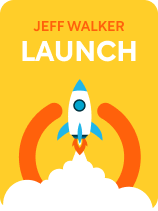

This article is an excerpt from the Shortform book guide to "Launch" by Jeff Walker. Shortform has the world's best summaries and analyses of books you should be reading.
Like this article? Sign up for a free trial here.
What are the steps involved in a product launch event? Can you launch before you have a product? How can you partner with other businesses and share their success?
At its simplest, a product launch is a process of introducing and selling a new product to potential customers. In Launch, Jeff Walker discusses three scenarios for launching a product in the online business world: a digital product launch event, launching without a product, and launching with partners.
Read more to learn how to launch a product in each of these three ways.
How to Launch a Product
The Internet has changed the marketing game. You can adapt to—and take advantage of—this new landscape to quickly and successfully grow your business. You can attract interested buyers with little more than an email list, even before you have a product to sell. Here’s how to launch a product in three different online business scenarios.
Scenario #1: Digital Product Launch Event
To make your launch an event, approach your product launch in five stages: 1) Create an email list, 2) gauge the interest of prospective customers, 3) build anticipation, 4) open for sales, and 5) follow up with buyers and non-buyers.
Stage 1: Create an Email List
Encouraging people to subscribe to your content helps you stay connected and form lasting business relations. Before you even mention your product, attract followers who are interested in receiving regular emails from you. Create your list with these steps:
- Figure out the core reason people should subscribe to your list. To do this, consider something free and valuable that you can offer through email.
- Identify your target market. Examine the demographics to get a better sense of how to market to them.
- Create a “squeeze page”—a landing page on your website that gives visitors the choice to either subscribe to the email list or leave.
- Encourage people to subscribe with an enticing offer. This should be something free and specific.
Walker suggests three methods of promoting traffic to your page:
- Organic traffic (through SEO)
- Social media
- Paid advertising
Stage 2: Gauge Interest
Gauge whether you’ve got a successful product worth launching by soliciting engagement from your followers. Send a simple email to your followers telling them about the product you’re planning to launch. Walker suggests directly asking for feedback and questions through a survey with questions. Afterward, write another email thanking people for their input and providing a progress update.
Stage 3: Build Anticipation
Send three pieces of marketing content (emails, videos, social media posts, etc.) to your email list to build anticipation for your product and convince them to buy. Walker suggests you space these marketing pieces over the course of five to twelve days. In your three marketing pieces, Walker recommends you give your target market the answers to three questions: Why they should buy your product, what your product is, and how it will benefit them.
Stage 4: Open to Sales
Create a sales page on your website with a video or letter summarizing your offer while emphasizing how buyers will benefit from it. Then, send a short email with a link to your sales page announcing that your product is available for purchase. For better results, communicate regularly with your followers. Walker stresses that you should have a definitive end to your launch to capitalize on people’s sense of scarcity.
Stage 5: Follow Up
After your launch, continue nurturing your relationship with buyers (and non-buyers) to grow your business long-term. Walker notes that people often feel underwhelmed after purchasing a product. To address this, continue to communicate and deliver more than what they had expected (bonus content). Strengthen connections by writing an email expressing your thanks, summarizing your launch results, and asking for feedback.
Scenario #2: Launching Without a Product
What if you don’t have a product to launch? Walker says you can create a business from scratch with his product launch strategy. With nothing more than an idea, you can gauge interest, build anticipation, and make sales by asking for continual feedback at every step. With this approach, you develop your product as you’re delivering it. This works especially well when you’re offering information or training to others.
For example, if you want to start teaching people how to train their cats to do tricks, you can follow the basic formula for a product launch:
Gather a list of prospects. Walker reassures that small lists work fine—in fact, they’re often more responsive. In your three content pieces, present your offer as though you had the full product developed, emphasizing the benefits your buyers will gain. Once you’ve opened your initial product to the market and made some sales, you can send surveys asking what your buyers are looking for. For instance, ask about which tricks they are most interested in teaching their cats. Equipped with their input, you can then create the next iteration of your product (in this example, your upcoming course). Then, you repeat the process, asking for feedback before developing the next.
| Customer Feedback Loop: How to Implement Feedback Walker’s approach of asking for customer feedback and using it to develop the next stage of your product is similar to a customer feedback loop, a customer experience strategy used to improve your product through continuous communication. Experts explain that feedback is vital to satisfaction and loyalty. Instead of improving a product, you can apply the four stages of this loop to get useful feedback to develop a product: Collect—While Walker suggests sending a survey to your buyers through email, you can gather customer feedback in a variety of other ways, such as text messages, which can be especially useful for direct questions. When launching without a product, consider interviewing some of your buyers. Analyze—To analyze feedback, experts suggest you separate your feedback (which may vary from comments and suggestions to concerns and questions) into categories based on the type of customer (such as those more familiar with you and your product versus those less familiar). This approach allows you to notice patterns and get a better sense of what’s important to your buyers, which will help you develop your product. Implement—After analyzing feedback, apply it to your product to make sure your customers feel heard and that you’re providing the value that they’re expecting. Follow-up—Like launching without a product, the customer feedback loop is cyclical and continuous. Following up after receiving and implementing feedback keeps your customers involved in the process. |
Scenario #3: Launching With Partners
Take your launch to the next level by doing a partner launch. In this approach, Walker suggests teaming up with one or multiple companies to promote your product to their subscribers. By having access to other email lists, you can quickly grow your own.
In the stage leading up to your launch, have your partners send emails telling their followers about your offer and directing them to your squeeze page. That way, new people join your list at the same time you’re delivering your three pieces promoting your product. In exchange for the increased exposure, your partner receives a portion of your sales.
(Shortform note: While Chris Guillebeau, author of The $100 Startup, agrees with Walker that working with affiliate companies is a powerful tool for growing your business, he cautions you to make sure you offer a decent commission to your partner companies. If you provide only a small rate, your partners may not put much effort into promoting your product.)
Walker offers these steps for finding a partner for your launch:
Step #1: Search online for keywords of what your target market might be looking for, for example, “learn cybersecurity.” The search results will show some companies offering that service.
Step #2: Browse the results for relevant companies in your field that serve your market’s goal and join their email lists. Walker recommends subscribing to around 50.
Step #3: Read their emails as they come in, and see if they promote other businesses. Then, narrow down to three to five best options. To start reaching out to potential partners, Walker says you’ll need to create value to stand out. You can do this by advertising one of their products, offering positive feedback for one of their products, or engaging with them on social media.
Walker says that you should focus on building a lasting relationship with your partners. When your partners promote your offer, they’re taking a risk. Before you involve them in your product launch, Walker suggests you run one with your own list first to make sure your product is successful. When you get good launch results, your partners will be more inclined to continue working with you.
| Product Launching With Influencers Walker writes that working with other companies is an effective way to gain exposure and grow your list of followers. In a similar vein, Ryan Holiday in Perennial Seller suggests you partner with influencers on social media to gain new customers for your launch. An influencer is someone in your niche with persuasive power and a large following of people in your target audience. This could be anyone from academics to artists to CEOs. In many ways, Holiday’s tactics to attract influencers to your launch are similar to Walker’s: Research—Like Walker, Holiday recommends you find people who have promoted products in the past that are similar to yours. He suggests you reach out through the lens that you’re going to improve their lives. Try to avoid those who might already be overwhelmed with requests. Give Value—As Walker recommends doing with partner companies, Holiday suggests offering influencers something of value. He notes that, since influencers care about how their followers perceive them, you should also consider what their audience finds valuable. You could try: giving free content, creating custom products for the influencer, or making them an unofficial brand ambassador. Build a Relationship—Influencers are often busy and swamped with requests to promote products. To stand out, Holiday’s advice echoes Walker’s: Focus on relationships before transactions. Treat influencers as people and focus on how you can offer value to them. |

———End of Preview———
Like what you just read? Read the rest of the world's best book summary and analysis of Jeff Walker's "Launch" at Shortform.
Here's what you'll find in our full Launch summary:
- How to stand out in an age when anyone can start a business online
- How you can market and sell a product with little to no start-up costs
- Why you should start an email list before you even launch your product






